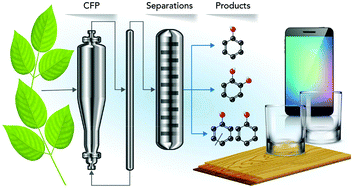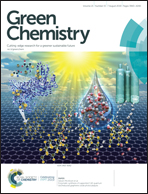Valorization of aqueous waste streams from thermochemical biorefineries†
Abstract
Thermochemical conversion of lignocellulosic biomass is a promising route to produce fuels and oxygenated chemicals and could enable circular carbon utilization. In most thermochemical conversion processes, however, some chemical co-products are lost in aqueous waste streams that are both dilute and heterogeneous. Cost-competitive isolation of these chemical co-products is challenging due to the high-purity requirements typically necessary for bulk chemical production. Here, we demonstrate the production and isolation of two biomass-derived monomers, phenol and catechol, from a comprehensively characterized aqueous waste stream generated via catalytic fast pyrolysis. Specifically, we separate phenol and catechol to 97 wt% purity using the industrially relevant processes of liquid–liquid extraction, distillation, and recrystallization. Techno-economic analysis predicts that a mixed phenolics stream can be produced from the waste stream at a minimum selling price of $1.06 kg−1. Overall, this work demonstrates an approach to high-purity oxygenated aromatic compounds that is potentially economically feasible and technically achievable which increases the atom efficiency of thermochemical conversion through waste stream valorization.



 Please wait while we load your content...
Please wait while we load your content...